What’s in a name?
This week: Recording local history; What’s in a name?; Neither use nor ornament; Passivhaus principles; Plastic v UV; Summer chores; Autumn is approaching; Calendar entries; Looking back;
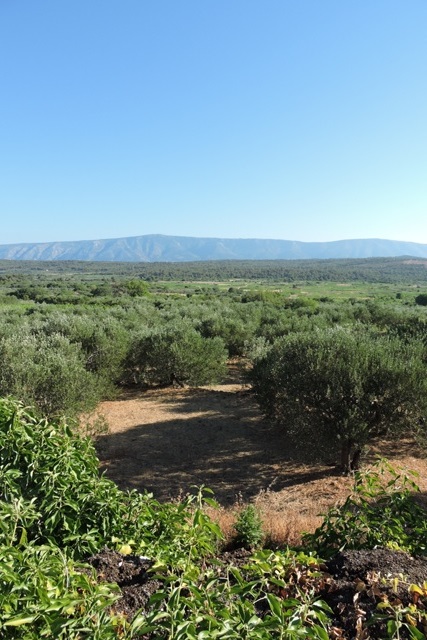
I have always been an early adopter of certain technologies.
However these tend to be things that I can see being of real use and value to me.
But these latest technological innovations are not getting something just to be first, they really have to be of use. I always research the technology well before buying anything.
At the other end of the scale is deliberately not buying an innovative product. For example, generating power from rooftop PV panels is a good idea, but the battery technology needs to improve a lot before I’ll have them on the roof.
Some time ago I was invited to join the Windows Insider Programme.
This is a worldwide organisation made up of computer users, big and small, to whom Microsoft releases new version of software to try.
If you have a million small computer users running new versions of software and reporting back on problems and bugs, when the final version is released to the paying public, there are likely to be fewer issues.
I installed the new Windows 11 developer edition programme last week. It has taken me over a week to reinstall all the various software programmes that I have, together with the drivers for things like the printers and scanners.

So far I have had no issues with the new operating system and even my legacy devices seem to be working.
The new operating system is much faster on startup than Windows 10, but has the same look and feel although things like Cortana have gone. That’s not a problem because I never used voice commands.
Overall, I’m impressed by the programme, even if the clean install has been somewhat labour intensive.
Recording local history
The next three weeks are usually the hottest of the year here in Dol.
We had the eastern European heat dome over us in June which created abnormally hot temperatures for the month. This week by 11am, it is generally too hot to do much work outside.
I don’t subscribe to the very old Noel Coward song about the activities of Englishmen in the heat of the colonial indo-Pacific countries.
We don’t have a noon-day gun, although there are cannon in the Spanish fort in Grad Hvar.
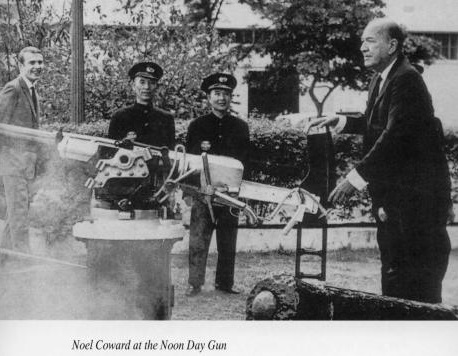
However all the Churches here ring a peal immediately after the clocks have struck 12 noon, calling the faithful to the minor service of Sext, which has the same effect as the Hong Kong harbour cannon.
So on hot afternoons this week I have been updating some of my living documents, including my Property Logbook.
The idea of a property logbook is not new. Part 5 of the UK Housing Act 2004 set out legislation for a Home Information Pack (HIP).
HIPS became mandatory on 1 August 2007. However they were suspended in May 2010 as expensive waste’s of time and have since disappeared from conversation.
By law they were required to be available from the time a home was put on the market for sale. Though essentially, they were just a static tool, a snapshot in time to benefit the seller rather than an active, living document.
Digital Property Logbooks, on the other hand, are a living and breathing resource that adds value for the homeowner whilst in the property and will benefit future owners and tradespeople down the line.
There is even a Residential Logbook Association, a new trade body for companies providing digital logbooks for the residential property market. So now people are making money out of the idea.
I have developed my own digital logbook, with history, photographs and records, wherever I possibly can. The record includes all the work I have done in this mammoth restoration project of my Dol house.
What’s in a name?
History here tends to be very much oral.
This makes it extremely difficult to establish with any degree of certainty what a building was once used for, where water pipes and utilities run or who actually lived here.
There are no Family Books, like the ones to be found throughout the near and middle east countries, listing family members.
Genealogy is not practiced and because both male and female first names are passed on from generation to generation, it is difficult to actually track who is, or was who.
I’m using my property logbook to include this currently unwritten history.
I know that at least some of the buildings were built by one Luca Roić in 1890, because a stone outside tells me that.
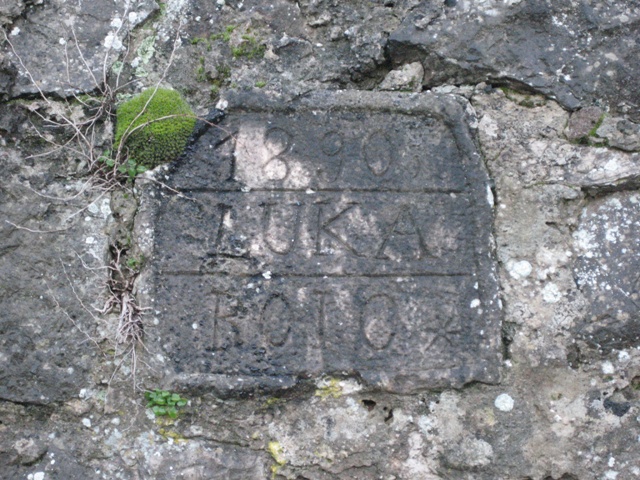
However, he wasn’t the Luca Roić who lived here as a child, was crippled with Polio, went on a pilgrimage to the shrine at Lourdes and erected the Kapelista above my gate.
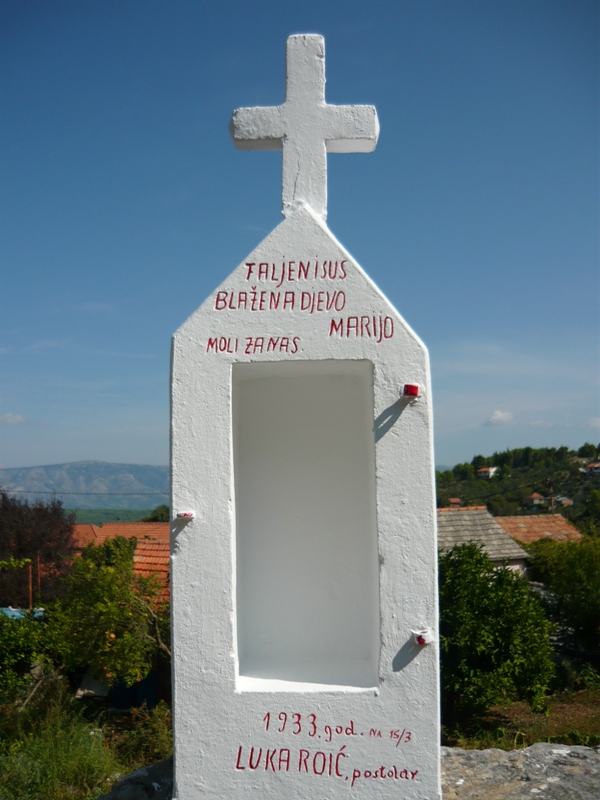

Nor is he either of the two Luca Roić, who currently live at number 11.
Just to add some complication, it was a Marinko Roić from whom ownership passed to a near relative, Ivan the Terrible, who I bought the property from!
Like everything here it will be a long “Work in progress”…
Neither use nor ornament
As much of central Europe has been deluged with rain, which has sadly caused more then 200 deaths, this part of the Mediterranean remains stubbornly dry.
At tea time on Sunday we had a light shower, which was not enough to register on my rain gauge. The minimum amount required for registering is 0.5 of a mm of rain.
The rain did wet the concrete slightly, but within an hour, it was dry again. The rain might have just wetted the surface of the leaves but it was really neither use nor ornament in terms of the soil.
Early on Monday morning, there was also a very brief shower. This wasn’t enough to even wet the concrete, so I was out shortly after, irrigating the plants and trees again.
My water usage has increased this year, just to keep things alive.
I can’t break down the domestic water usage from irrigation, but I am currently using 2,000 litres a week, up from 1,200 this time last year.
Almost all of that is going on irrigating, and still everywhere remains stubbornly dry.
I dismantled my rain gauge on Monday to polish the capture funnel, so not a drop of rainfall is missed and everything that falls goes into the measuring cups.
It needed doing. There were assorted spiders inside and some moss growing in one of the measuring cups.
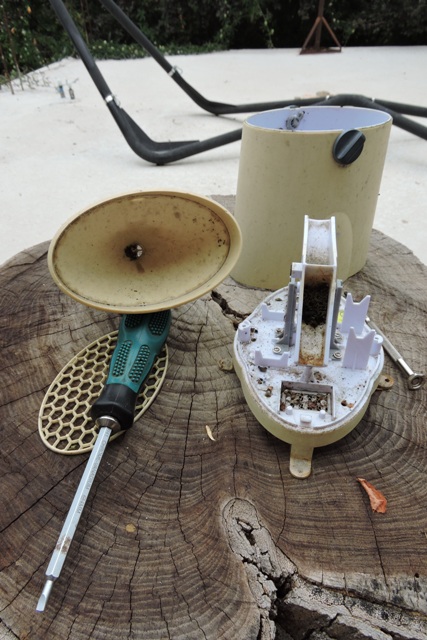
However when precipitation is evaporating faster than it is falling, I’m afraid that even a highly polished surface will not make much difference.
Coronavirus is a major challenge for humankind, but I feel that climate change is a greater threat, because it affects every living thing.
Passivhaus principles
I have been in contact again with my architect about moving forward with my application for joining up my two buildings.
True, I will loose a lovely terrace, but my plan is to have a flat roof above the lounge, so the terrace just moves up a floor.
That will make it further to carry the coffee. Or I could just install a coffee machine at 2nd floor level. But then I would have to carry the used cups down to be washed.
I was looking at the BBC News website when an article about Passivhaus standards caught my eye.
Passivhaus is a German concept. The Passivhaus Trust works to promote buildings built or upgraded to the Passivhaus standard.
To achieve the Passive House standard, you need to meet 5 main principles.
1 – High quality insulation.
2 – Heat control and robust windows.
3 – Airtight construction.
4 – Heat recovery ventilation.
5 – Thermal bridge free design.
For weeks now the inside temperature has not fallen below 20ºC and is generally around 24º or 25º Celsius at night, and regularly around or just over 30ºC during the heat of the day.
Even using passive cooling, and differential pressure cooling, the temperature still remains high.
What I notice is that the workshop which was built last year and has 10 cm of thermal insulation on all the walls, is substantially cooler than my other buildings.
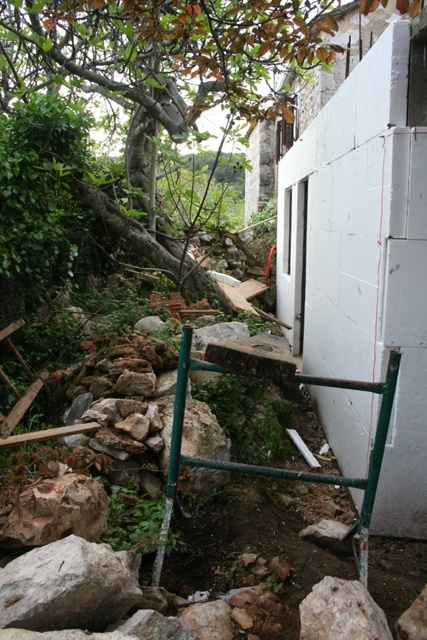
I have planned for a single air conditioning unit in the new lounge, but powered by PV cells on the roof. However, just like my digital rain gauge which needs regular maintenance, so does air conditioning.
I well remember the problems I had in Abu Dhabi where every room had a separate roof top cooler.
There were leaks from the units inside the rooms, the roof top units needed regular cleaning to remove dust from the filters and the coolant had to be kept topped up.
So even running an A/C unit on renewable solar power, there are significant environmental costs.
Just in relation to the solar power, the batteries have a finite life (my essential UPS batteries only last 18 months) and there is the maintenance and cleaning of rooftop PV panels.
With an average of 2,700 hours of sunshine a year here in Dol, there is an abundant supply of solar energy, but very little by way of wind power and no water power.
Making my home as thermally efficient as you can, with centuries old buildings would be the environmentally correct thing to do, even if I still incorporate a power supply and pipework for an A/C unit during the build, as a “just in case” measure.
Some things, like a thermal-bridge free design cannot be achieved on 140+ year old buildings with 800mm thick, solid walls.
As for air tight and draught free, that would be nice…
But there are still things that I can do, for example looking at incorporating the infrastructure for a heat exchanger into the building plans.
What I really, REALLY want to do is make progress with my planning application, which has taken way, way too long already.
This would mean that in the short term at least, I would have some joined up buildings!
Plastic v UV
I have been removing dead grasses from the orchards this week. My wrist is still sore from the thumping it got when I was using the breaking hammer a couple of weeks ago, so I have been trying to rest it.

Probably more accurately, I have been trying not to aggravate the soft tissue injury.
Soft tissue notoriously takes longer to heal than bone!
In the top orchard, I was digging up some wild Gladioli, Gladiolus illyricus, to move the to a more prominent position.
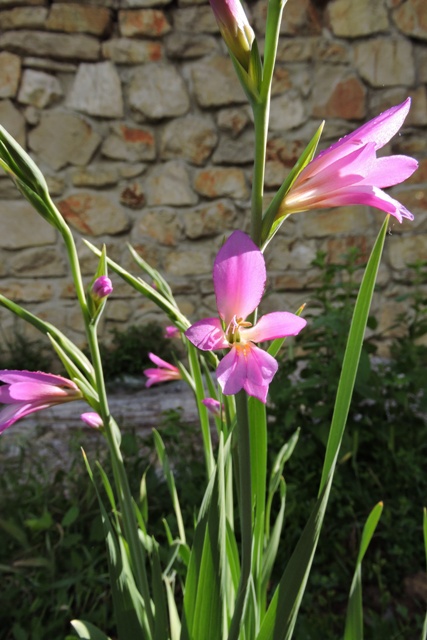
The island was the home of the Illyrians, before the Greek invasion of the 2nd century BC.
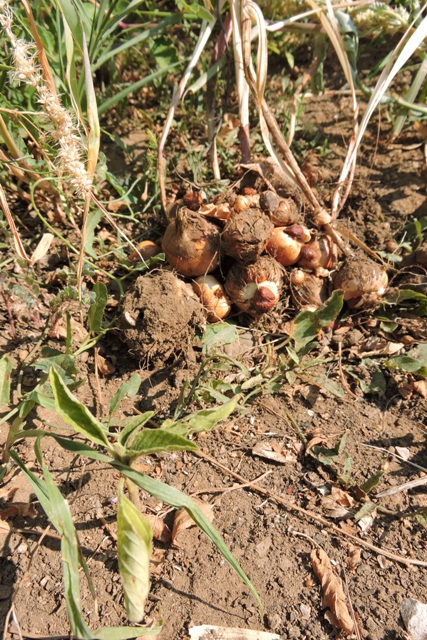
The wild Gladioli are endemic to the Mediterranean basin and along with their cousin, the field Gladioli, Gladioli italicus, are the species from which all our current cultivated Gladioli have come.
It is interesting to think that these wild flowers are descendants of those which were perhaps enjoyed by Queen Teuta in her palace on the hillside behind my home, almost three millennia ago.
In the spring I laid a carpet of cardboard in the orchard to curtail the growth of weeds.
This has worked in the main, except where some of the deep rooted and pernicious weeks like Convolvulus have forced their way out between cracks in the cardboard sheets.

I also laid two kinds of plastic sheeting, as an experiment to see which was better at preventing weed growth.
There has been much experimentation with laying plastic over soil, so that sun heats the soil and cooks the seeds in the weed seed bank layer atop the soil.
Clear plastic is believed to be best because it allows the sun’s rays through so there is greater heating. But black is also effective because it absorbs heat.
With some offcuts of both types, I have laid some plastic where I did not have enough cardboard. The black plastic has perished in the sunlight much faster than the clear plastic.
Which has been better at cooking and killing the weed seeds, time will tell, but both seem to have prevented weed growth.
To my untrained eye, the clear plastic seems to have been marginally better.
Now I will have to remove the tattered remnants of the black plastic sheet to dispose of it safely.
Outside the gate, where I covered the pile of Nula with a brand new sheet of black plastic, that has been shredded in just five weeks and now needs replacing.
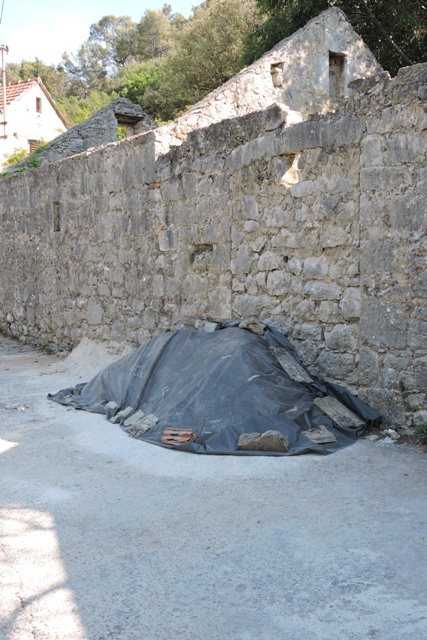

We really need to harness the power of the sun as a carbon neutral and powerful alternative energy source…
Summer chores
There are some jobs in the garden which can only be done in the summer.
Here there is a convention that firewood is only gathered a few days either side of the full moon. That is today, the 24th July.
A neighbour cut down a couple of trees in the spring and said I could have the firewood.
Isn’t it great when you can get someone else to clear up the mess after you?!
They are not especially big logs, but seem to be very dense wood. I’m not sure what the tree is.
It has pointed leaves with a serrated edge and the leaves are very rough and waxy, but it isn’t an evergreen.
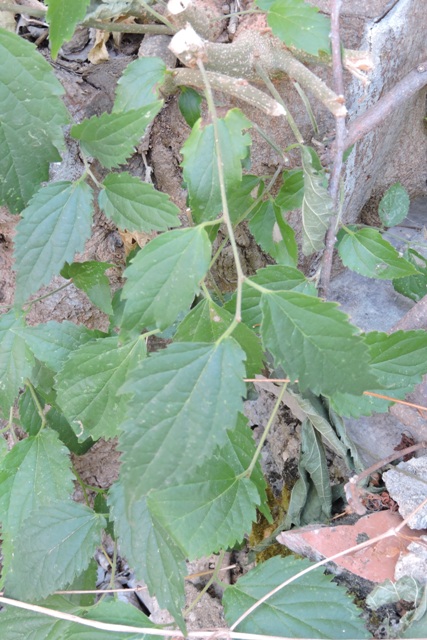
If trees can be weeds, then this is one. I see seedlings sprouting all over the place and pull them out while they are small.
This is my third barrow load of the timber with the last few lengths. There is about a one week’s supply of wood there for my woodstove.
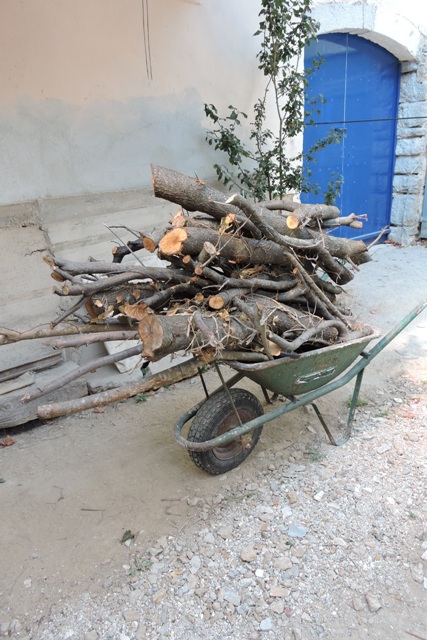
I have been stacking the wood under the summer kitchen, where it is close to the house and in an area where I can easily cut it into stove size pieces.
I do like to get prepared early for winter!
Autumn approaches
I think that Autumn will be both early and long this year.
Because of the absence of rainfall and heat stress, I am already seeing leaves changing colour on trees, like this sweet Cherry, which normally don’t show colour change until the end of August.
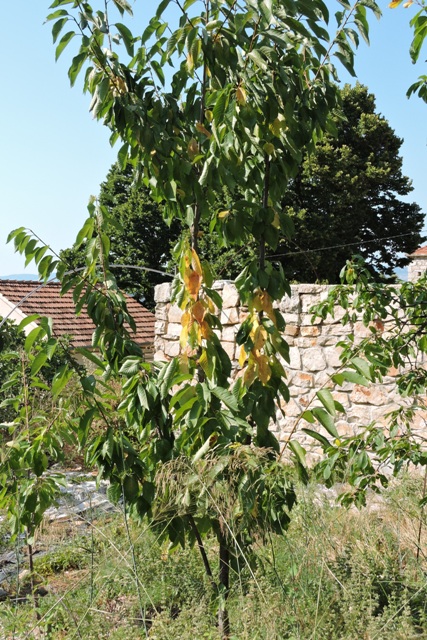
As I was in the Top Orchard on Friday morning there was a flock of the Bee Eaters overhead. They are one of our colourful summer migrants, but unusually this year I haven’t seen any on the electric supply wires around my home.
They are not especially noisy but when they are in flocks of twenty five or more, their chirpy call is noticeable, especially when almost all the other birds are silent.
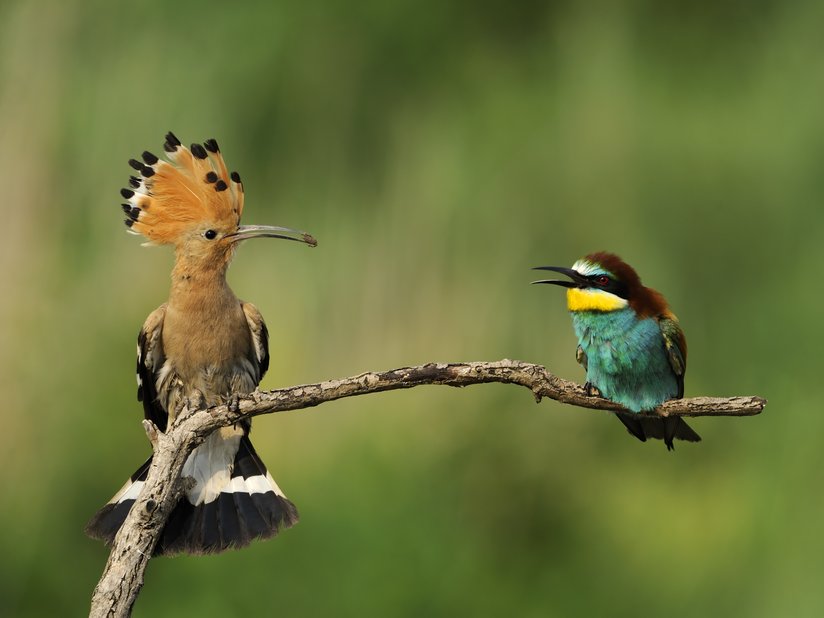
I think that almost all of our Golden Oriole have departed now. They are a raucus lot, screaching loudly to each other from the tops of the trees.
They are very sensitive to humans so to see them you need to be really still and preferably well hidden. I missed several photos this year because as soon as I moved with my camera, they flew off.
I noted the first arrival in my Springwatch callendar on the 29th April. There was one calling loudly early on Tuesday morning but none were answering.
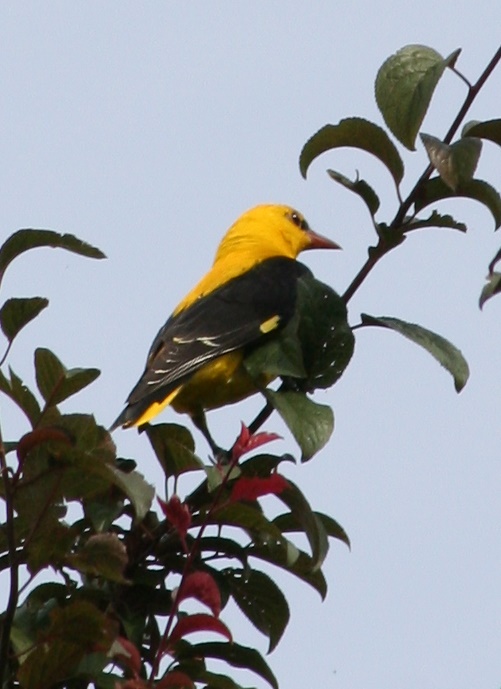
Whilst I didn’t see it, after the bird went quiet I have heard no more calls.
So after barely 11 weeks here, and with this year’s fledglings, they have departed on their migration to spend the winter in central sub-Saharan Africa.
I haven’t heard a HooPoo for probably two or three weeks, so likely they have departed too.
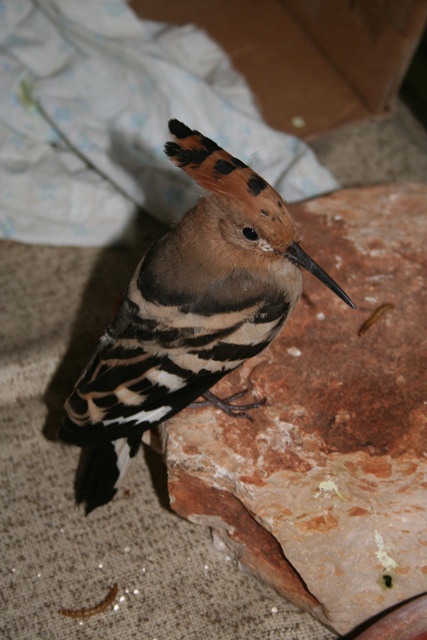
What I do have in the garden is a family of Red Backed Shrikes, Lanius collurio.
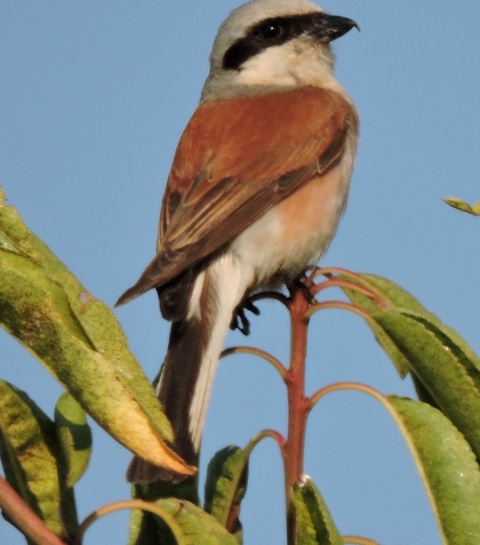
The males are especially handsome with their “zoro” masks and russet backs and wings.
The females have less well defined markings.
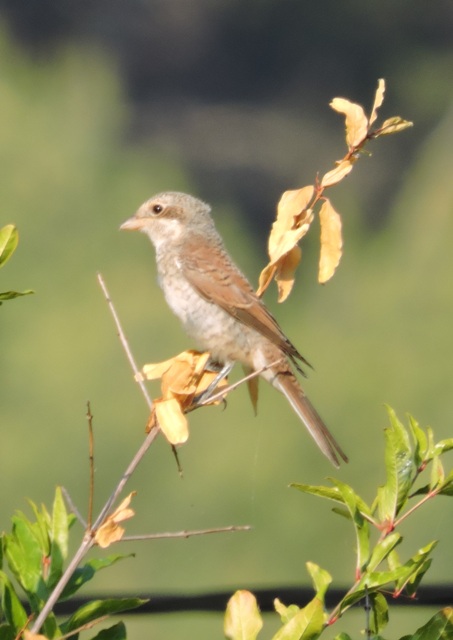
There are two, possibly three fledlings that are squarking loudly, attracting my felines to their perch, as they wait, asking for their parents to “bring more insects”. They will also be departing south soon as well.
Calendar entries
It is relatively easy to keep a Springwatch calendar. I start in December every year with a series of blank cells on a new spreadsheet.
Then as the seasons move inexorably forwards, the moment I see or hear one of the arriving migrants, their calls being obvious against the normal soundscape, I record the date.
Bird ringing doesn’t take place here, but it is reasonable to assume it is the same family groups which return year after year.
To actually record when migrants depart is much more difficult.
Bird calls are a part of the summer soundscape and gradually the number of any one species calling starts to diminish.
Writing this at lunch time on Saturday, with a temperature in the shade of 33.2ºC and all the windows open creating a pleasant cooling draught inside, the ONLY sound from outside is the incessant striations of the Cicadas.
There is no bird song, no mechanical noises, not even a dog. Everyone and everything except the myriad Cicadas are taking their siesta.
The beautiful song of the Nightingale is part of our spring and early summer sounds.
Then one day you realise that you haven’t heard the Nightingale which usually sings from a thicket on the edge of the Top Orchard for a few days. But how many days since it was last singing – three, six, a week?
Recording presence is MUCH easier than recording absence.
A couple of years ago I started a trial Autumnwatch log, but it rapidly became apparent that he venture would not be successful and I gave up.
The changing climate is just one thing that means it is difficult to keep accurate records.
It looks as though this July will be the first since I moved to Dol when we have had no recordable precipitation. Compare that with the average of 8 mm for the month and a maximum of 26 mm in a single event in past years.
I usually notice the first leaves starting to change colour in early August.
This year it has been a month earlier and already my vines are staring to drop a few leaves onto the patio floor.
As the days shorten, by two minutes of daylight every day at this point in July, I always feel a little sad that some of our fleeting summer visitors are already on their way south for the winter.
But they will be back again next spring. NCG
Looking back – Week 29
This is the start of links to past issues of the blog.
2014/29 Fire and Water

2015/29 Doing as the locals do
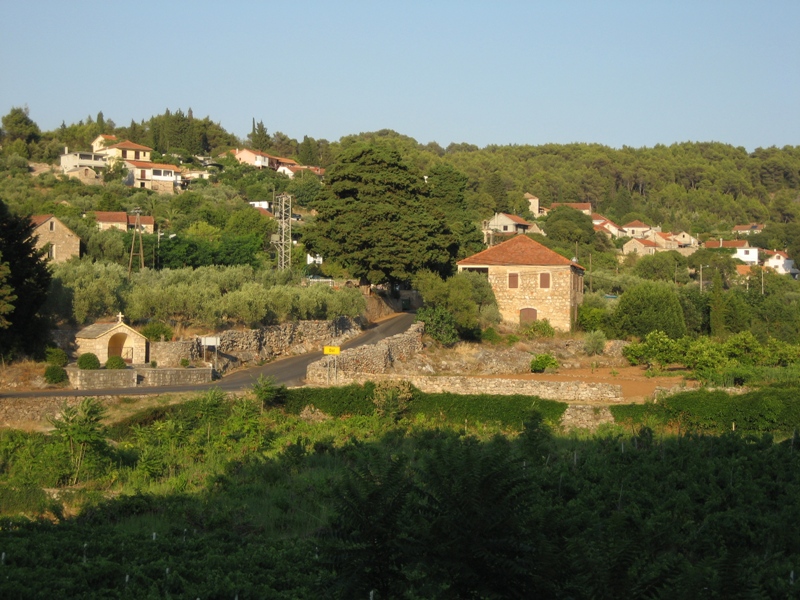
2016/29 Snakes alive

2017/29 🔥 Fire! Fire!🔥 🚒 🚒

2018/29 Counting teeth
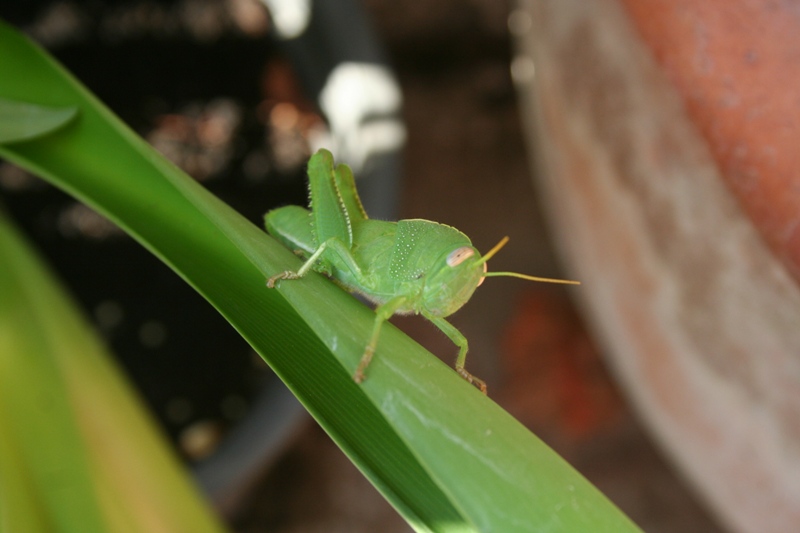
2019/29 Tarantula Lily
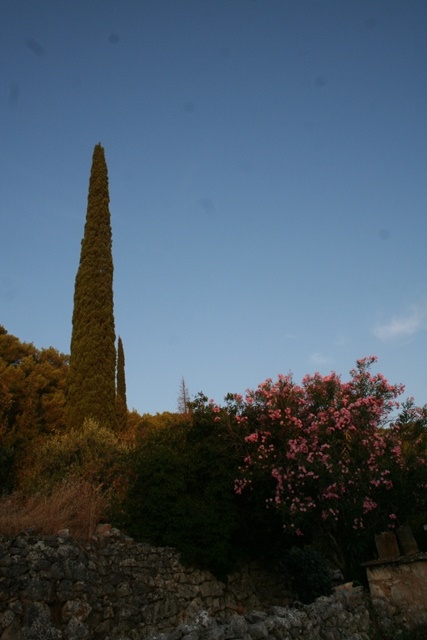
2020/29 The wonder of nature
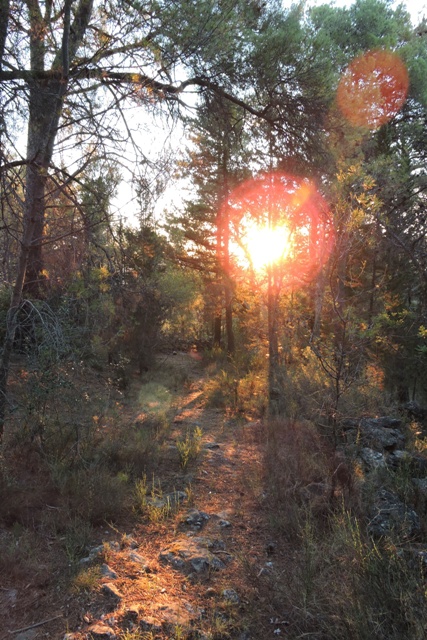
One Response
Tony Griggs
Lovely variety of small birds you have there Norman. One of the most gratifying things we have found with our large garden full of native plants is the attraction it presents to small birds.
You are correct about battery storage technology. Our house at Palana on Flinders Island in southern Australia on the 40th parallel south of the equator has solar panels that feed into the local grid which provides for a modest profit. Like elsewhere, when that profit dissipates through contract changes, we are looking at going off grid, but battery technology is not there yet. It’s the next revolution in energy that has to occur.
Whilst you are baking, I’m beside a roaring fire here…..we are experiencing a normal cold wet winter.
Cheers
Tony & Linda